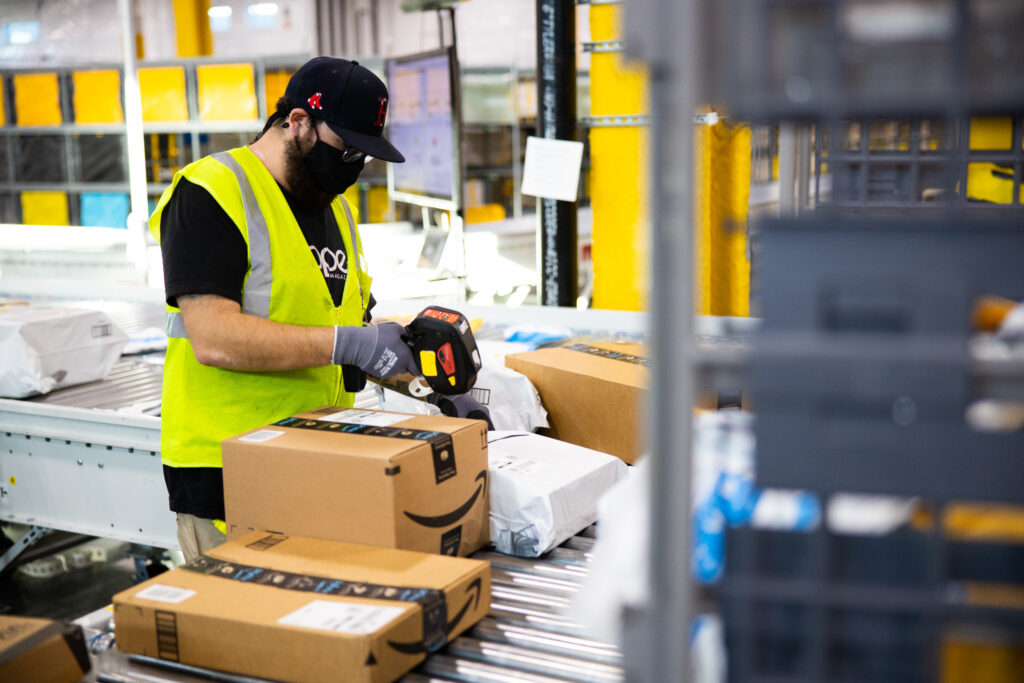E-commerce growth means more pressure on last-mile capacity – and potentially more last-mile emissions. The quest for growth, capacity and greener delivery may seem to be competing forces but are in fact what makes the last mile so interesting.
Ukrposhta growing parcel volumes with OLX
From October 4 to the end of this year, Ukrainian postal operator Ukrposhta will deliver orders free of charge from the OLX platform. Free shipping is valid for all goods weighing up to 30kg and maximum length of 70cm, with delivery taking two to three days nationwide.
In March and April this year, Ukrposhta and OLX trialled free delivery over a one-and-a-half month period, during which Ukrposhta delivered 500,000 items free.
There has been significant growth in OLX parcels in the Ukrposhta network, with more than 2,300,000 parcels being delivered in the first half of 2021 – double the same period last year.
Amazon Prime launches in Poland
Amazon is launching Amazon Prime in Poland, giving Prime members access to next-day and weekend (including Sunday) delivery. InPost, DHL Parcel and Poczta Polska (Polish Post) will be the principal delivery partners for this service.
Will Amazon learn about the Polish last mile and then introduce its own last-mile capability? It’s a risk, as that seems to have been Amazon’s modus operandi in other countries. One key difference here is that InPost already has an impressive parcel locker network with 15,000 machines, and over two million cells. This is virtually impossible for any player to achieve in the short term.
Moreover, InPost’s market-leading position is backed up by its more than seven million active users, with 89% of Polish consumers saying that delivery to parcel lockers is their most preferred delivery option. Further evidence of InPost’s status as the real last-mile leader is its Net Promoter Score (NPS) of 72. All this should make both competitors and Amazon alike think twice.
At the same time, it is interesting that Amazon is somewhat forced to work with a local competitor, as InPost has been offering its own fulfillment services for some time.
Posten Norge backs green delivery vehicles
Norway’s Posten Norge continues to forge ahead in its quest to cut vehicle emissions. The Norwegian postal operator is acquiring 439 new vehicles powered by electricity and gas.
Posten has Norway’s largest vehicle fleet with about 3,050 delivery vehicles and around 780 trucks. Of the order for 439 new vehicles, 323 electric vans will replace fossil-powered vans, 18 of the electric vans will replace existing electric vans, and 37 new electric vans will meet new needs.
This year Posten has been testing a new 18-pallet electric truck. Now Posten is adding 61 new electric and biogas trucks to its fleet, which will replace traditionally-powered trucks.
Posten Norge is positioning itself as a leader in green delivery. As e-commerce parcel volumes continue to grow, the need for greener delivery options will become increasingly urgent.
Follow the Last Mile Prophets on LinkedIn
 Ian Kerr is the founder and host of the Postal Hub Podcast, the weekly podcast for the postal and delivery sectors.
Ian Kerr is the founder and host of the Postal Hub Podcast, the weekly podcast for the postal and delivery sectors.


